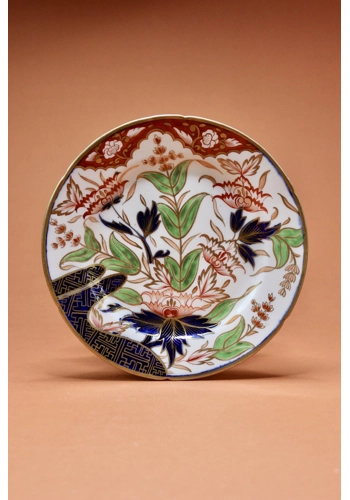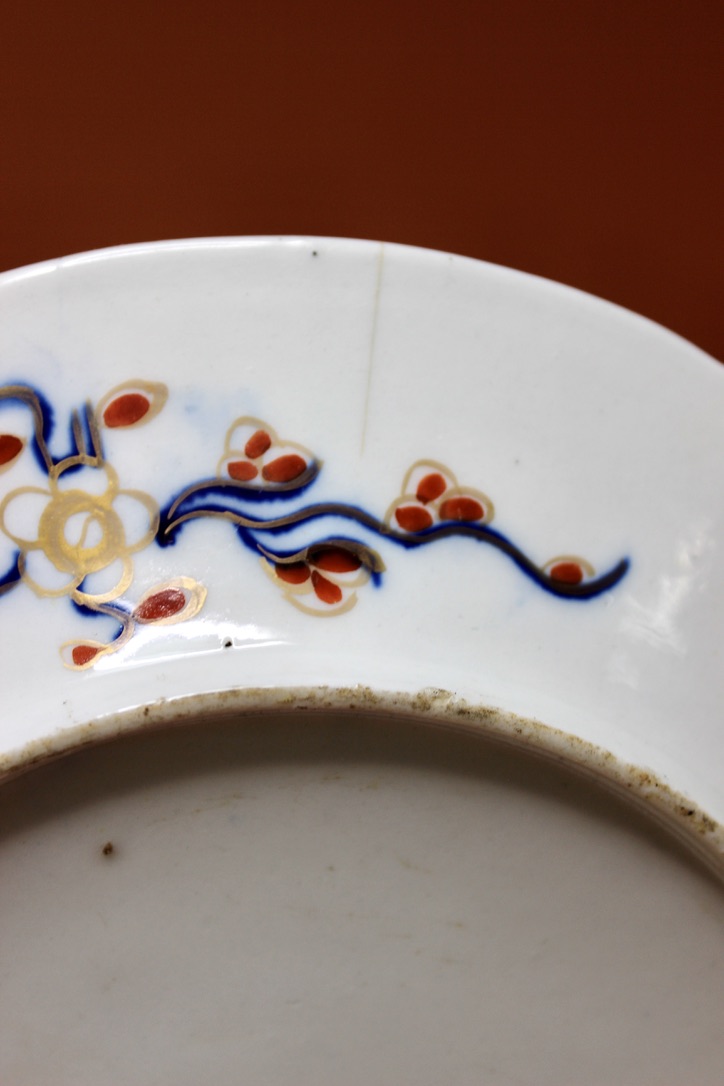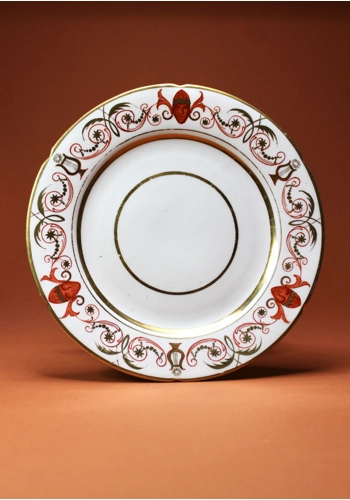Coalport Japan or "Finger & Thumb" Pattern Plate c.1800
An early example of the very popular Coalport Japan or Finger and Thumb pattern.
Originally produced circa 1800, I believe this plate to be close to that date. Quite thickly potted and heavy for its size.
This pattern was first produced by Chamberlain's Worcester and later copied by John Rose at Coalport although there are clear differences between the Chamberlains pattern and the John Rose version.
Japan pattern, as you might expect, originated from the influence of Japanese Imari porcelain dating back to around the 1640's when, due to the collapse of the Ming Dynasty in China, the export of porcelain from China temporarily stopped, pushing Japan to produce distinctive porcelain pleasing to its expanding market.
At this time Japan, where there was an ancient potting tradition but very little in the way of porcelain production, learned to produce porcelain from Korean potters and began to sell to the West taking over the Chinese trade.
Japanese porcelains were typically decorated in a stylistically distinct and different way to the Chinese ceramics which had gone before.
Geometric patterns influenced by Japanese textiles, densely packed and textural effects and the use of the blue red and gold palette made them very decorative and attractive to the Western market.
Shipping out of the port of Imari, these became known as Imari wares.
It was not until the Kangxi Reign in China (1662-1722) that the Chinese begun exporting to the West again, and it was not until the opening of the Imperial Kilns around 1680 that full production commenced.
In this period, Chinese potters found that the market for "Imari" patterns was so strong that it was in their interest to copy them. So this is where Chinese Imari originated.
Chinese Imari tends to have a less tightly packed style and a more flowing style of brush work.
When John Rose opened his factory over 100 years later, the Imari palette and the market for Imari was still strong.
English porcelains have a long tradition of echoing these Imari colours and patterns which extends right though the nineteenth century and into the present day.
This plate however is still one of the classic and relatively early Imari patterns on English porcelain.
Maker's marks:
None
Dimensions:
216mm diameter
Weight:
396g
Age:
225 years
Condition:
Good antique condition: Enamels and gilding good. A hairline from the rim as shown in the pictures. Otherwise no chips cracks or restoration
Maker:
John Rose Coalport






